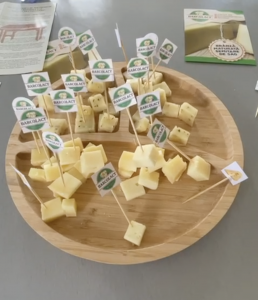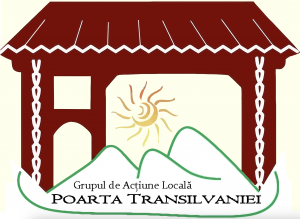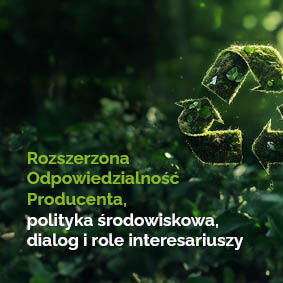Transylvanian Cheese Reinvented with EU Money
Beyond the tales of vampires and strange creatures of the night, Transylvania is increasingly known worldwide for its gastronomy.
Transylvanian gastronomy is a blend of Romanian, Hungarian and German traditions with Armenian and Balkan influences. Old recipes preserved in Transylvanian villages are being discovered by young enthusiasts studying at the University of Agricultural Sciences and Veterinary Medicine in Cluj, who have set themselves the task of preserving the gastronomic heritage of this European region.
But it's not only the students of the Cluj university who are involved in revitalizing gastronomic traditions, but also its teachers. A very special project has been funded by the European Union through a very dynamic association bringing together local entrepreneurs, civil society and public administration in the Western Carpathian region.
It is the Local Action Group (LAG) "Poarta Transilvaniei", which implemented a project entitled "Development of new products in the territory of the LAG Poarta Transilvaniei". This project involved nine partners: the University of Agricultural Sciences and Veterinary Medicine, the Association of Cattle Breeders from the village of Sâg, and seven farmers.
The project started in 2018, at the initiative of the executive director of LAG Poarta Transilvaniei, Cristi Blaga. "We noticed that local farmers had a big problem. Because they lacked the capacity to process and store milk, they were prisoners of the prices offered by intermediaries. These prices were very low and didn't allow farmers to make the profits they needed to reinvest and grow their businesses. So we started from idea that there is strength in unity and proposed that farmers join forces to start a new project," says Cristi Blaga.
At first, his proposal aroused enthusiasm in the Transylvanian village of Sâg in Sălaj county. "The farmers seemed seduced by the idea of selling their milk at higher prices and also becoming shareholders in a cheese factory. But when they found out that they had to contribute financially to the project, their enthusiasm faded. Only seven farmers eventually stayed in the project," says their leader, Dorel Breje.
The total value of the project was €594,738 and the European funds amounted to €463,625. The difference had to be provided by farmers struggling on the verge of poverty. But they had faith in their plan and their dream gradually became a reality.
To succeed, they enlisted the help of specialists from the University of Agricultural Sciences and Veterinary Medicine in Cluj, which is the top-ranked Romanian university in its field. The team led by Professor Călin Vac was a veteran of European projects. He set up the first European project writing office in a Romanian university before Romania joined the European Union in 2007. Professor Călin Vac started to study which is the best milk that can be used to produce mature cheeses. He identified the breeds of cows suitable for this part of Europe, as well as the amounts of buffalo, goat and sheep milk that can be added to cow's milk to create a distinctive taste for the mature Sâg cheeses. He also identified plants that grow in the spontaneous flora of the meadows in this part of Transylvania to flavor the cheeses.
Professor Călin Vac then studied the Romanian and European markets in order to position future mature cheeses from a marketing point of view. He found that the average Romanian consumer buys four times less cheese than a European consumer. On average, a Romanian consumer buys five kilograms of cheese, while a European consumer buys on average 20 kilograms of cheese. It also found that two thirds of Romanian consumers prefer traditional cheeses and prefer organic, certified organic products. However, when it comes to buying, half of Romanians choose products based on price as the main criterion, while the other half of buyers consider quality as the main criterion.
From this stage, the initiative was taken over by Professor Avram Fițiu, who has a great deal of experience in collecting and using traditional recipes to create food products that are successful on the Romanian market. He discovered that one of the most valuable plants found in wild flora is thyme. The use of this plant is attested in history. Thyme was used by soldiers of the legions of the Roman Empire established in Dacia, today's Romania, to ensure their adaptation to the local food. Thyme has a positive influence on the human body in that it stimulates the secretions of the liver and has a positive effect on the intestines. In addition, thyme has a distinctive taste. As a result, this herb has been included in one of the recipes used for the production of Sâg cheeses. These cheeses are semi-hard and semi-fat cheeses with a taste that is highly appreciated by consumers.
Now the project in Sâg has become a success. The seven farmers who founded the factory are happy to have succeeded in creating high value-added products. "In the beginning, we sold a kilogram of cheese for 20 lei (€4). Now, we sell it for 120 lei (€24), which is a tremendous progress. The challenge now is to expand the factory. We are trying to find serious farmers in the region who will supply us with the milk we need, in the quantity and quality we want, in order to increase the quantity of cheeses," says farmer Dorel Breje.
The success of the Sâg project has also inspired other farmers. Already, other milk producer associations want to copy the project model.
PADUREAN BIANCA
Cluj Today Press SRL
email us here
Legal Disclaimer:
EIN Presswire provides this news content "as is" without warranty of any kind. We do not accept any responsibility or liability for the accuracy, content, images, videos, licenses, completeness, legality, or reliability of the information contained in this article. If you have any complaints or copyright issues related to this article, kindly contact the author above.
Global Mailer Packaging Market to Reach USD 14.35 Billion by 2035, Driven by E-Commerce and Logistics Boom | FMI
Caton Delivers Flawless Live IP Transmission for EVO Japan 2025
Unlocking the Future of Glass Door Merchandisers: The Quiet Revolution of Energy Efficiency and Smart Refrigeration
Kalendarium
Więcej ważnych informacji
 Jedynka Newserii
Jedynka Newserii

 Jedynka Newserii
Jedynka Newserii

Polityka

Parlament Europejski przeciwny centralizacji polityki spójności w UE. Apeluje o jej większą elastyczność
Parlament Europejski sprzeciwia się pomysłowi centralizacji zarządzania polityką spójności w Unii Europejskiej. W maju br. większością głosów przyjął sprawozdanie na temat spójności gospodarczej i społecznej i jej przyszłości po 2027 roku. Zdecydowana większość grup politycznych jest za decentralizacją modelu polityki spójności, mówiąc stanowcze „nie” ograniczeniu roli władz regionalnych i lokalnych. Jednocześnie wskazuje na potrzebę uelastyczniania tej głównej polityki inwestycyjnej tak, by sprawnie można było reagować na ewentualne kryzysy i nowe wyzwania.
Bankowość
Globalny sektor finansowy mocniej otwiera się na blockchain. Nowe regulacje likwidują kolejne bariery na rynku

Coraz więcej banków i instytucji finansowych inwestuje w technologię blockchain. To przede wszystkim szansa na zwiększenie bezpieczeństwa transakcji, ich prywatności, ale też nowe możliwości weryfikacji tożsamości oraz przechowywania wartości. Jedną z najbardziej zaawansowanych platform opartych na technologii blockchain jest Ethereum – zdecentralizowany system umożliwiający tworzenie i wykonywanie smartkontraktów oraz aplikacji rozproszonych. O ile klasyczne łańcuchy bloków pełnią funkcję zdecentralizowanego rejestru transakcji, o tyle Ethereum wprowadza warstwę logiki wykonawczej, czyniąc z blockchaina uniwersalną platformę kontraktów samowykonalnych i aplikacji rozproszonych.
Konsument
Po debacie prezydenckiej wzrosło zainteresowanie woreczkami nikotynowymi. Niesłusznie mylone są z nielegalnymi w Polsce snusami

Debata prezydencka 23 maja br. pokazała, że Polacy nie wiedzą, czym są saszetki nikotynowe oraz snusy, a także czym się różnią. Sztab wyborczy Karola Nawrockiego podał, że kandydat na prezydenta podczas debaty przyjął snus. Sam Karol Nawrocki sprostował, że była to saszetka nikotynowa. Tymczasem różnica między oboma produktami jest ogromna. Snus zawiera tytoń, którego nie ma w saszetce, a jego sprzedaż w UE – z wyjątkiem Szwecji – jest zabroniona.
Partner serwisu
Szkolenia

Akademia Newserii
Akademia Newserii to projekt, w ramach którego najlepsi polscy dziennikarze biznesowi, giełdowi oraz lifestylowi, a także szkoleniowcy z wieloletnim doświadczeniem dzielą się swoją wiedzą nt. pracy z mediami.











.gif)

 |
| |
| |
|